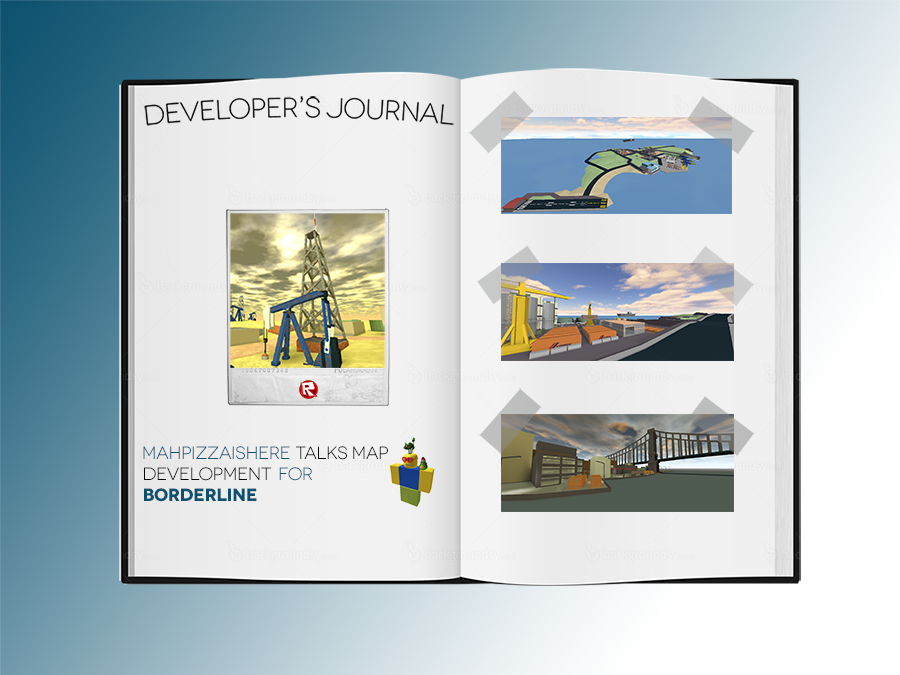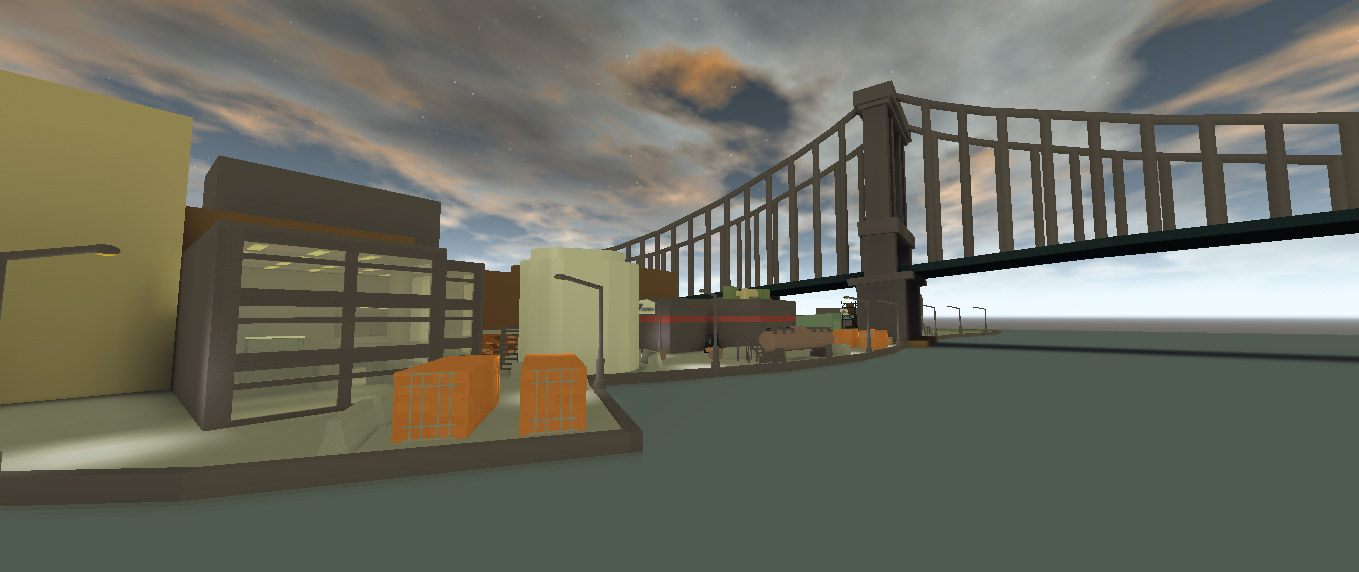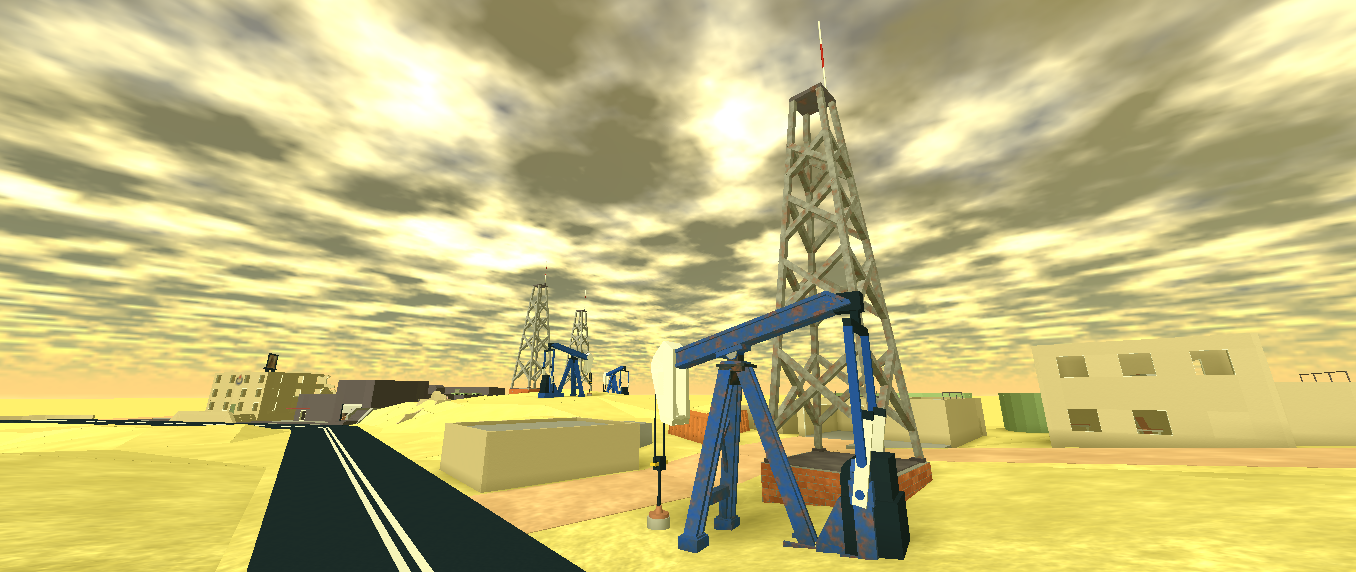Blog Archive
Last month, we gave builders an opportunity to write for the ROBLOX blog. We received a wealth of thoughtful submissions and quickly started working with potential authors on articles that leverage their unique experience and expertise. MahPizzaIsHere has established himself as a premiere builder and level designer, and today discusses his techniques for designing stylized, but efficient first-person-shooter levels.
Hello, I’m MahPizzaIsHere, and I’m a member of StudioMM. I’ve been tasked with designing and building all the maps for Borderline, a highly anticipated first-person shooter that’s been in development for some time now.
Crowd-sourcing: a fine line
Much of game development is focused on programming, and with good reason–the average ROBLOX game designer spends many hours slaving over their code. This means map development often gets put on the back burner. A common solution to this problem is to crowd-source maps, which has been attempted with varying degrees of success. Games that feature simple design aesthetics often find success with crowd-sourcing because asking builders to put a few hours into level design isn’t that big of a burden to anyone involved. Crowd-sourcing maps to a game with a more complex and detailed design aesthetic, on the other hand, is much harder. Borderline fits in the latter category, and that’s where I come in.
Grounded in realism: environments based on real locales
From the beginning, StudioMM wanted Borderline to have a certain element of realism, so building maps that exist in the real world was of paramount importance. This lead to the creation of several real places, including Corregidor, an island in the Philippines, Sarir Oil Field, the largest oil field in Libya, and Manhattan Project, based on New York City’s Manhattan Bridge. These locations are designed to tie into a storyline; my maps are not arbitrary. Realism and continuity create a deeper connection between player and map, and I want players to feel like they’re fighting for something meaningful.
Balance: size, detail and brick count
When I was originally tasked with creating the maps for Borderline, it was with the understanding that the environments would be large, extremely detailed, and low on brick count. I realize this sounds contradictory–and therein lies the rub. Having to balance size, detail and brick count is difficult, but I’ve developed methods that allow me to do all three.
One of the methods I’ve adopted is “dynamic terrain.” Dynamic terrain is a very important part of my style. Essentially, it is the use of CFramed parts to create an uninterrupted, but non-flat surface for the environment. Each brick is matched with the edge of its neighbor and rotated based off that edge. Although there are several methods that builders use, I prefer using Anaminus’s Command Utility v5 plugin. Among its functions is “edge select,” which lets you efficiently create dynamic terrain. Builders samaxis, finwei, and yours truly are considered pioneers of its use and have excellent examples in their places. Typically, I use rotate increments of five degrees. This way, terrain is neither too harsh nor too subtle.
Though it’s a time consuming method, dynamic terrain appears to be extremely detailed and uses very few bricks. It’s also the perfect solution to building extremely large maps–you can make the individual parts large, leading to a detailed map without using excessive bricks.
I’ve also learned to limit the temptation to copy and paste parts. Doing this may cause your brick count to skyrocket before you know it and there’s usually a more efficient way to achieve the look you seek. Every single decision you make when building competitive levels needs to revolve around being efficient. Though this requires more time, it ensures your work will be the most accurate representation of what you had in mind, as you’ll be forced to create several revisions. Re-visiting your work time and time again will help you catch bugs, both minor and major.
Balance: planning for gameplay
Borderline seeks to combine hi-tech vehicular combat with classic infantry operations, which creates a substantial problem: the infantryman obviously wants intense action, but armored units want wide open spaces to maneuver. I’ve turned to well known shooters (Battlefield 3, for example) for answers, and have found that these games have massive environments, but attract infantry to certain choke points and strategic objectives. On Corregidor, for example, I envision jets flying over the thousands of studs of island but perhaps 80 percent of infantry clustered around one objective. Ideally, my solution will please both parties.
Although maps tend to develop a flow organically as players learn the routes and tricks, planning how a battle will progress and take shape is a very important part in competitive level design. This is especially important in games with capture points or rush modes, where everything has to be balanced so both teams have an equal chance to succeed. I consider the distance of each team from capture points at any given moment, and space elements accordingly. Additionally, I plan out how much cover I will provide and its location. Corregidor, being very vehicle-based, is a lot of open space. Sarir Oil Field, designed to blend infantry and armored warfare, has a lot of cover around capture points but less in between, which will hopefully allow mobility between points but also encourage intense firefights. Manhattan Project is almost exclusively for infantry, and thus has dense cover throughout.
Style
My building style has been described as sweeping, industrial, and simple. I often use Google Images as a resource to refer to pictures of things that I can’t accurately picture in my head. I’ve been able to build oil wells, shipping crates, tankers and cranes extremely realistically by referring to images on the internet. To re-iterate, I build these structures with a question in the back of my mind: “how can I make this as realistic as possible while using the least amount of bricks?”
Maintaining interest
Having built for years on ROBLOX has taken some dedication. It’s very easy to lose interest in projects and quit before completion in search of inspiration elsewhere. In order to stifle this feeling, I’ve taken the lead in marketing Borderline. I’m constantly posting pictures of my maps on Twitter and reading the comments section of Borderline so I can process feedback in the form of place updates. The feedback loop keeps me interested in continuing to do high-quality work during Borderline’s development.
Final word
We’re hopeful that the Borderline project will be finished by the middle of summer. Working on this game has taught me how to be a creative problem solver, and how to work well with others (even if they are half way around the world). It’s been a really rewarding experience.



